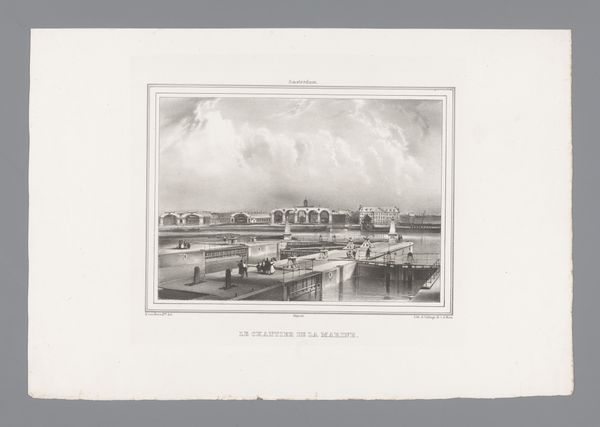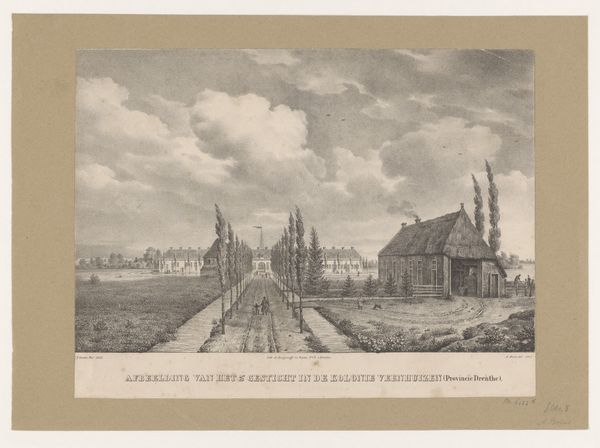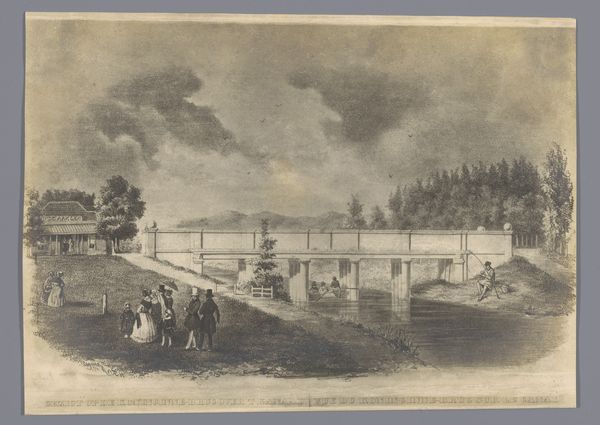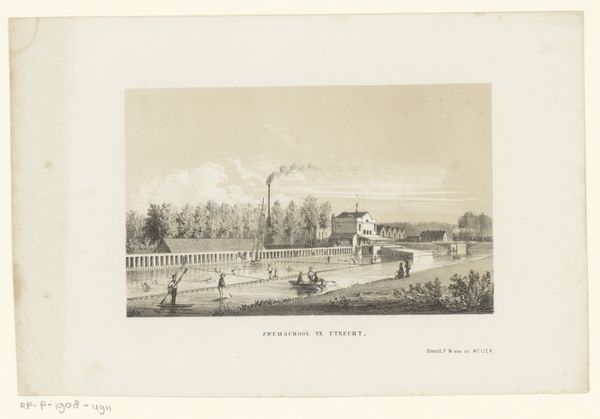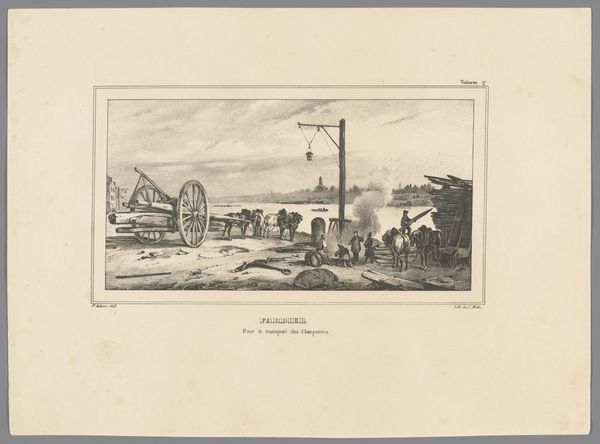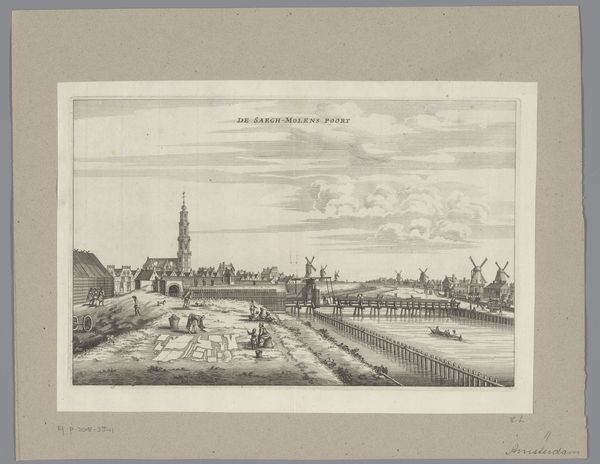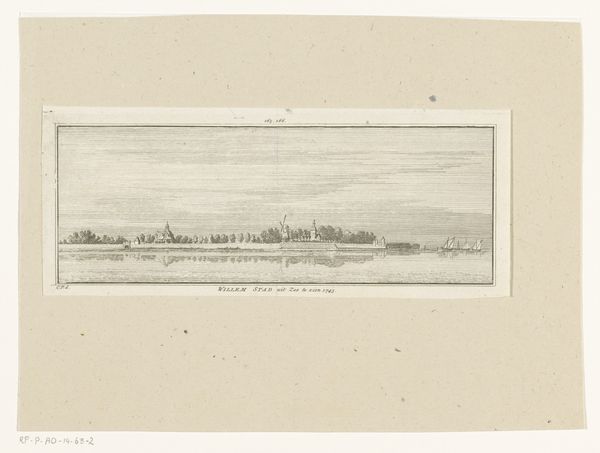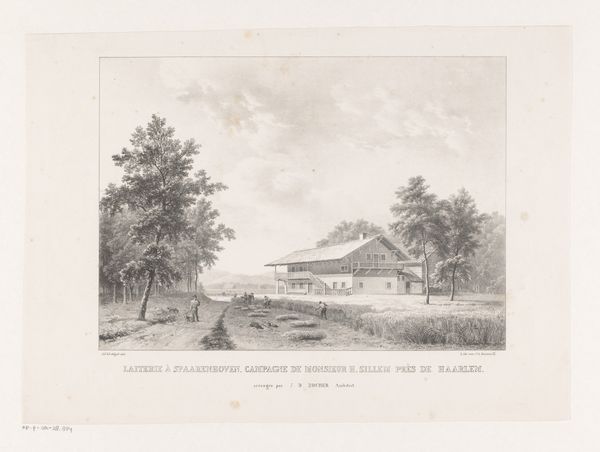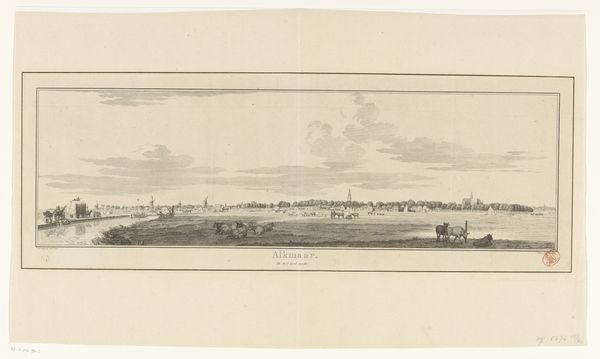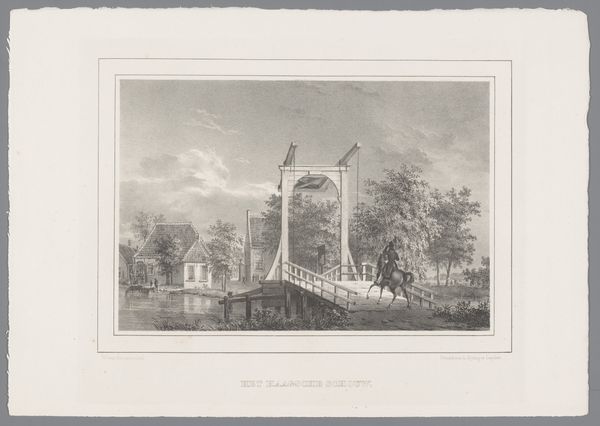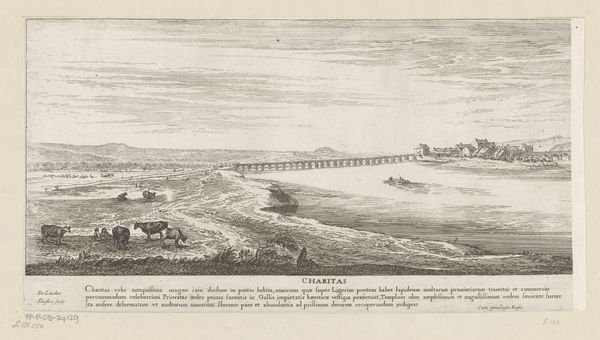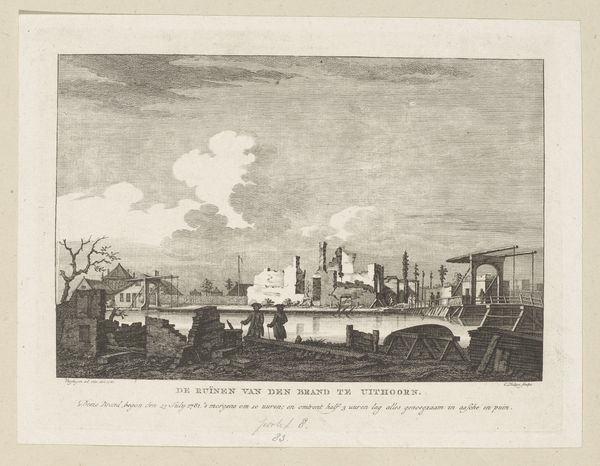
print, etching, engraving
#
dutch-golden-age
# print
#
etching
#
landscape
#
cityscape
#
engraving
#
realism
Dimensions: height 300 mm, width 408 mm
Copyright: Rijks Museum: Open Domain
Curator: This is an engraving from 1827 by Alexandre Joseph Boens. It’s titled "Gezicht op het derde gesticht in de kolonie Veenhuizen," or "View of the third institution in the Veenhuizen colony." What stands out to you about it? Editor: Initially, it feels like a study in control. A very long building, very neat fields, almost oppressive in its orderliness. Even the clouds feel regimented. What am I supposed to be seeing, exactly? Curator: Well, Veenhuizen was a "free colony" established in the early 19th century as a social experiment—essentially a workhouse system for vagrants, orphans, and beggars. Boens is documenting a planned, regulated community. The symmetry, for instance, reflects the colony's aim: social rehabilitation through structured labor and moral instruction. Editor: Ah, that shifts things. The long building then becomes a visual representation of that attempt at control and the imposed order. Even the printing technique—etching and engraving—suggests that calculated, almost mechanical, way of seeing. Curator: Precisely. The almost architectural precision with which Boens renders the buildings… Look at the lines of perspective; it all funnels toward this point of control. Notice that interesting, gallows-like structure to the left as well. Editor: It could just be the angle or my skewed interpretation, but I initially interpreted it to carry an unsettling association. And in terms of symbolism, water is always interesting – what do you make of that meandering stream that’s ever present at the very bottom of the frame? Curator: A persistent undercurrent? A life force that persists even within a controlled environment? Maybe the enduring promise of nature in a place designed to subdue it. I am with you on the initial reading of that "gallows" now, by the way. It haunts the image! Editor: Right? Okay, my read on it has changed entirely. What seemed initially sterile is now deeply unsettling. The print serves not just as a depiction but also as a kind of...warning, perhaps? Curator: Maybe a mirror. Reflecting on the ambitions and contradictions inherent in such projects. Thank you for offering your interpretation, which has also greatly shaped mine. Editor: A pleasure, as always. The weight of symbols shifts with perception, after all. I think the dialogue itself embodies what images offer across time.
Comments
No comments
Be the first to comment and join the conversation on the ultimate creative platform.

